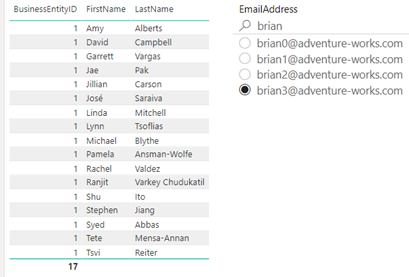Power BI Dynamic M Query Parameters Reloaded
In a previous blog from October 2020, I ranted about the narrow list of data sources supported by Power BI Dynamic M query parameters. The February 2022 update of Power BI Desktop expanded the feature reach to relational data sources, such as SQL Server (all flavors), Oracle, Teradata, and SAP. This warranted a second look to see where we’re now and where we’re going.
Dynamic queries are now possible to popular relational data sources
The extended support makes it possible to execute SQL queries or stored procedures by passing parameters based on the user selection. I attach a sample pbix file that demonstrates this scenario. It calls a stored procedure uspGetManagerEmployeesTL in the AdventureWorks2021 database. The stored procedure is a slightly enhanced version of the original uspGetManagerEmployees sp included with AdventureWorks because I wanted to experiment with different scenarios around data security. The idea is to execute the stored procedure after each EmailAddress slicer change to see the employees reporting to that manager.

The following needs to happen to get this feature to work:
- You must configure the stored procedure to execute in DirectQuery mode when setting up the connection (the Employee table that I use for the slicer could be imported).
- In the case of calling a parameterized stored procedure in DirectQuery, you must wrap the call with OPENQUERY (OPENROWSET won’t work for Azure SQL Database) to avoid Power BI choking when running the report (<storedprocedure parameter> only actually works in Power Query but not when the report renders), as explained in more detail in my blog “Power BI DirectQuery with Parameterized Stored Procedure“.
- You must create a query parameter (Login parameter in my case).
- In the Model view, you must map the filtered field (in this case EmailAddress in the Employee table) to the Login parameter in the Advanced Properties.
- In Power Query, modify the stored procedure call to use the Login parameter.
Source = Sql.Database("xps", "AdventureWorks2012", [Query="SELECT * FROM #(lf)OPENROWSET('SQLNCLI','trusted_connection=yes', 'exec AdventureWorks2012..uspGetManagerEmployeesTL ''" & Login & "''')", CreateNavigationProperties=false])How about passing dynamically user context or DAX measure output?
If you read the original blog, I was after passing the user identity obtained from USERPRINCIPALNAME() as a parameter to the stored procedure to support the scenario where the client already has a database security in place. Unfortunately, we still can’t meet this scenario because of the other limitations with dynamic query parameters listed in the documentation. Specifically:
- Currently, there no way to pass results of DAX measures to Power Query. You might get innovative and try filtering the slicer using a DAX measure, such as the one below but it won’t work because it uses an “advanced” filter.
EmployeeFilter = IF(SELECTEDVALUE(Employee[EmailAddress]) = USERPRINCIPALNAME(),1)
- The filtered field must be the only field in the context. For example, you can’t use cross-highlighting from another visual that lists another employee’s attribute, such as FullName, even if that maps 1:1 to the filtered field. The classic example where this could be useful would be to show the user-friendly name in a slicer but to pass the system key to the database. Sorry, we’re not that advanced yet although SSRS could do this 20 years ago…
In summary, you can now execute parameterized dynamic SQL statements or stored procedure against traditional relational data sources in DirectQuery by allowing the user to select the parameter value mapped to a dynamic query parameter. However, existing limitations prevent more flexible integration scenarios, such as passing DAX measures to the data source. Unfortunately, Power Query and the model continue to act as two tenants in common that don’t care much about each other’s whereabouts.




